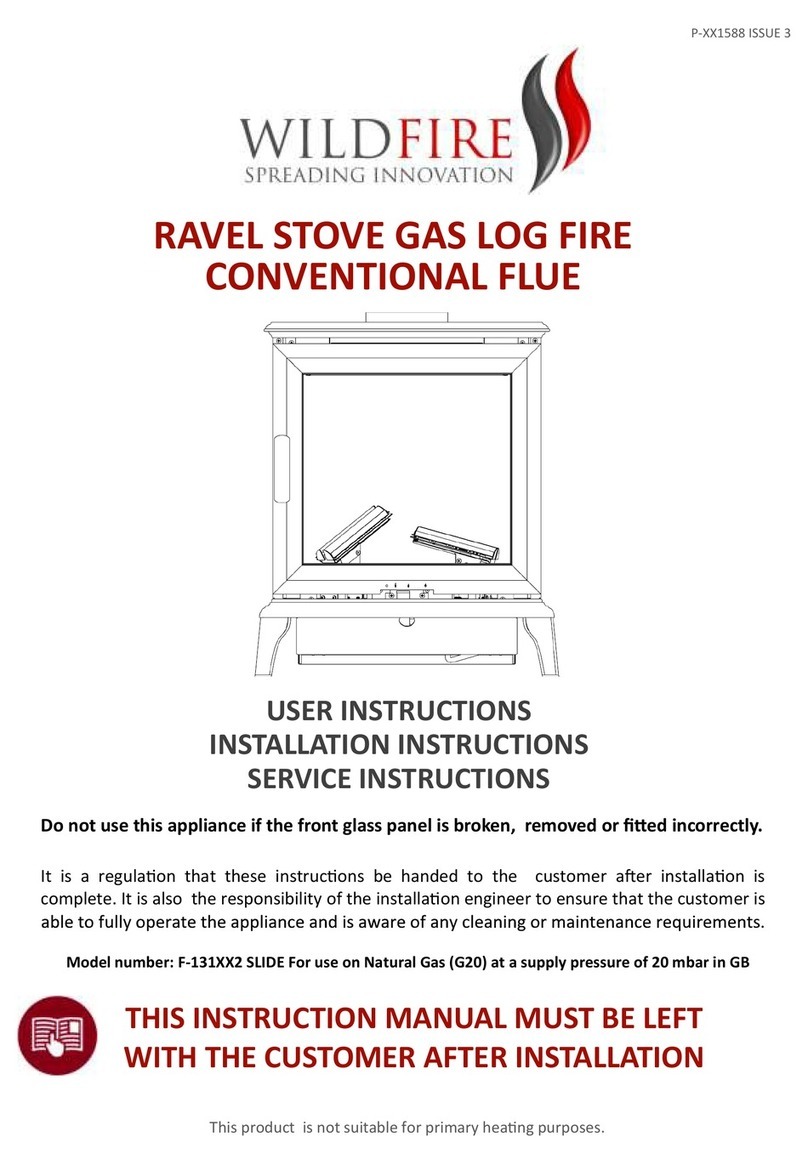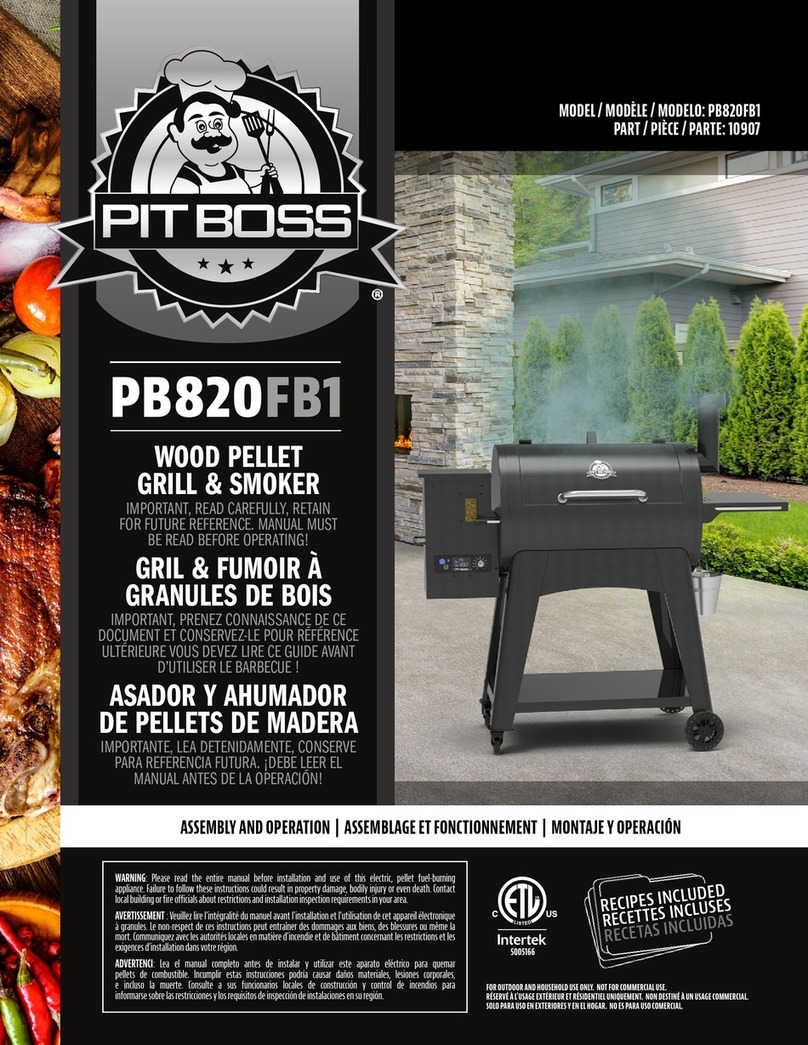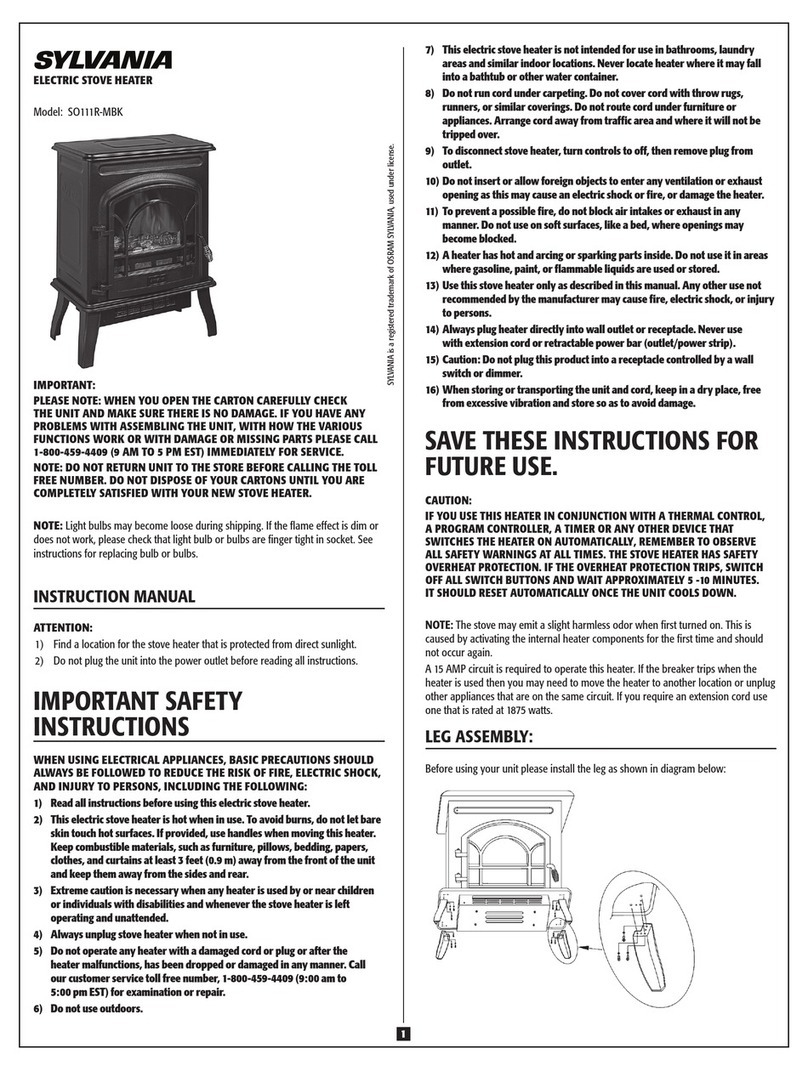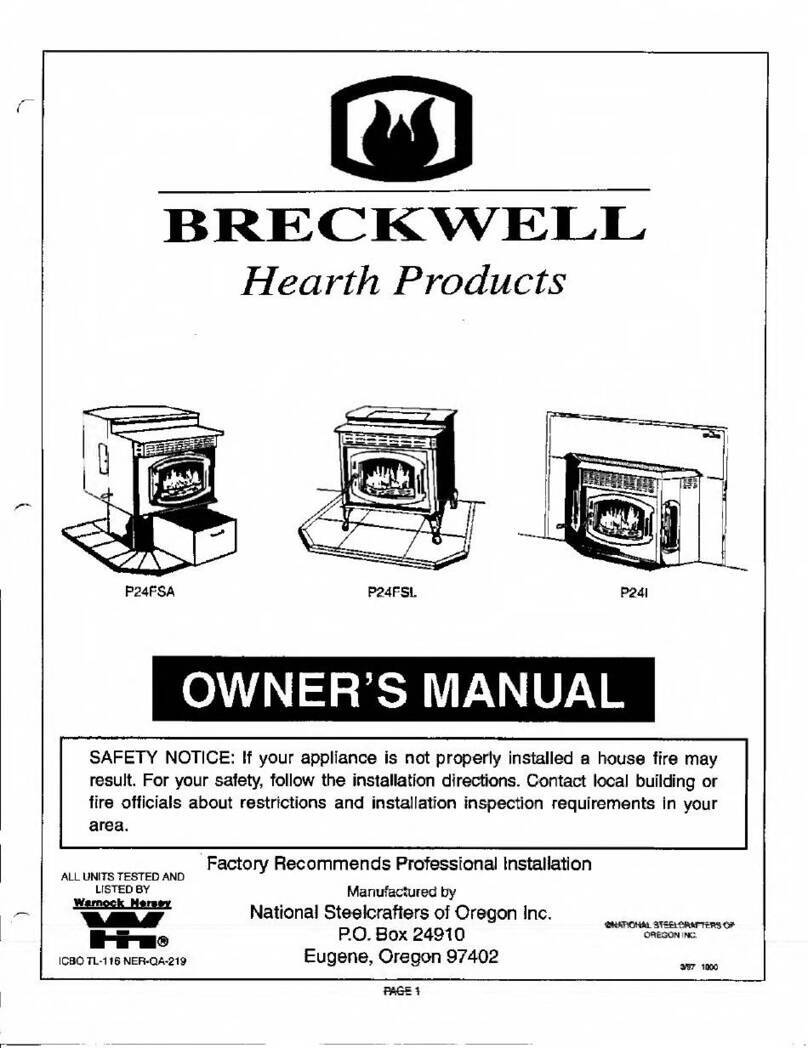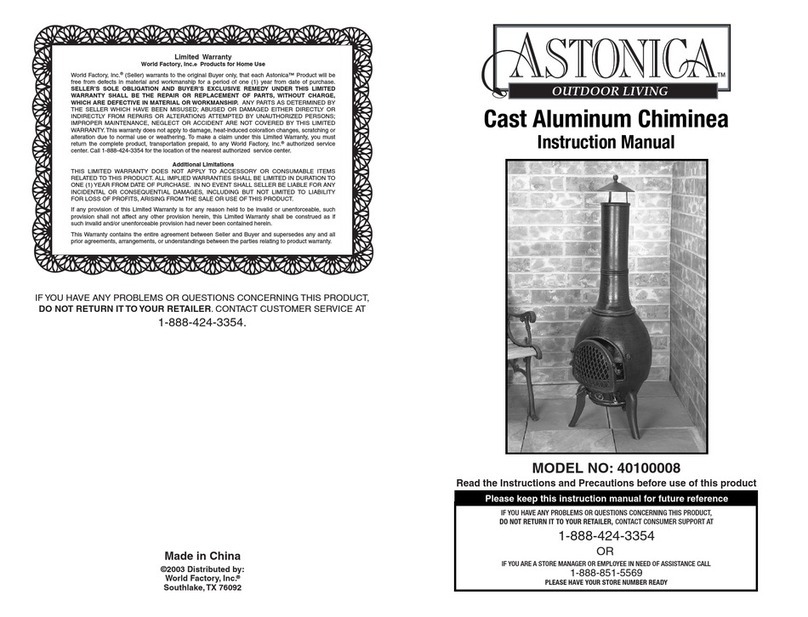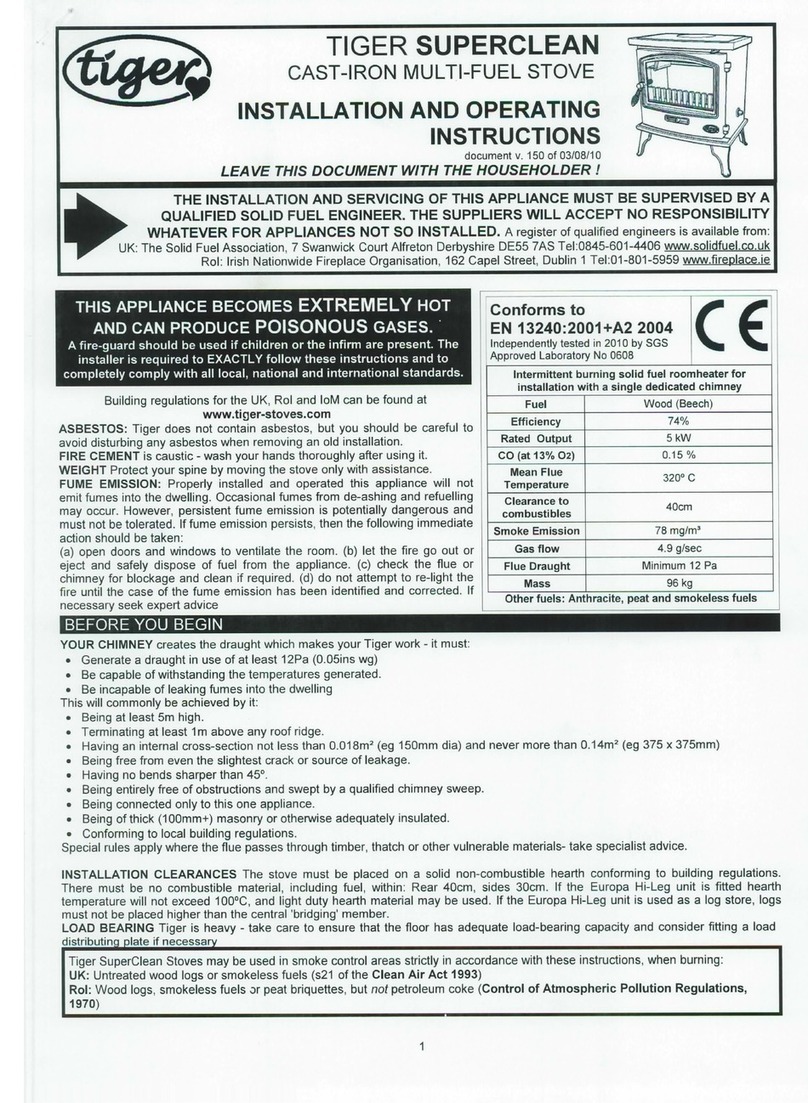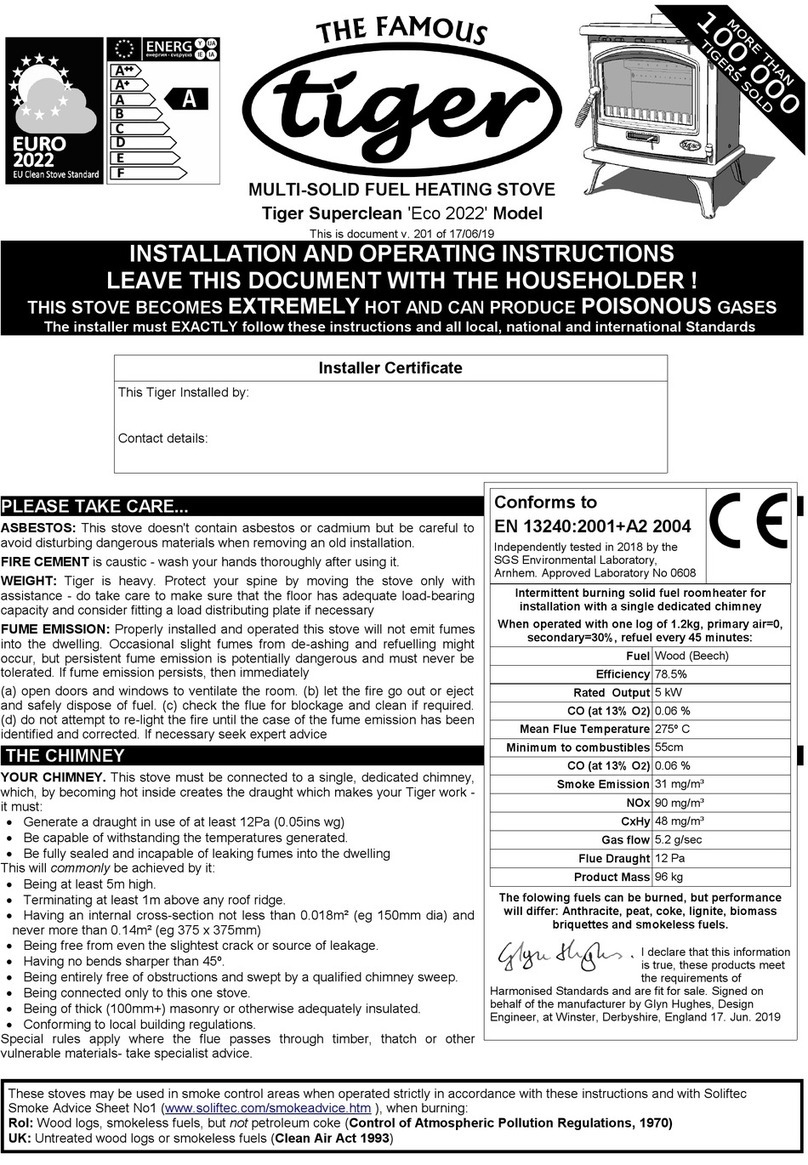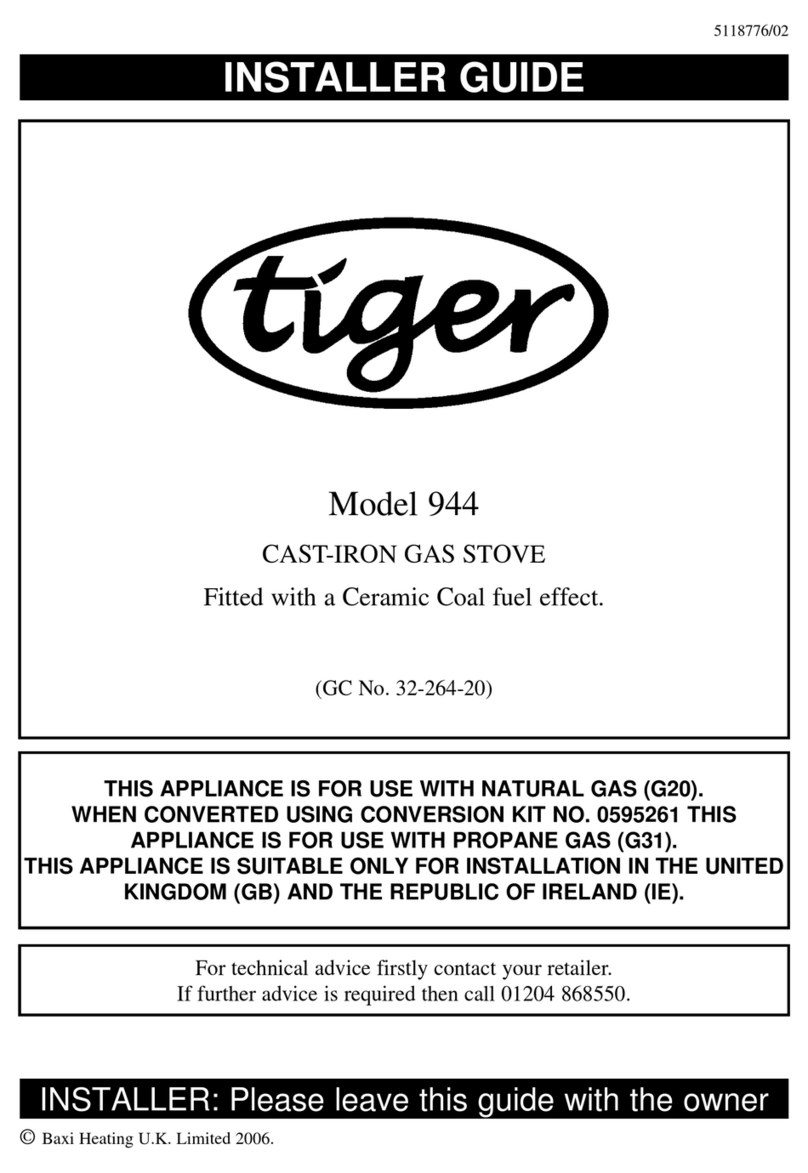LIGHTING AND CONTROLLING THE STOVE: Remember that the stove is designed to be operated with the door se-
curel closed.
1. Near the stove will be the gas isolation tap. Turn this to the on position.
2. Between the front and rear legs on the right hand side of the stove ou will find the burner control knob.
When the stove is first operated it should be run at maximum for several hours to help the painted coating to cure. While
this happens slight fumes and smell ma be apparent, which ma linger for a week or so. This is normal and quite harm-
less. You ma prefer to keep the room ventilated until the curing process is completed.
A. SWITCHING ON/ IGNITION. Depress the control knob & turn counter clockwise. Gas will flow to the pilot burner. The
piezo igniter will give off a high voltage spark & the pilot burner will light. (More than one attempt ma have to be made on
first lighting the fire.) Keep the control knob depressed for approximatel 10 seconds, then turn the control knob full
counter clockwise to release gas to the main burner.
. CONTROL OF GAS FLOW. Turning the control knob clockwise reduces the gas rate from the maximum to the pre-set
minimum setting. Turning between maximum & minimum does not actuate the piezo igniter. The control valve can onl be
set on pilot b depressing the knob & turning it to the pre selected pilot position.
C. SWITCHING OFF WHEN IN PILOT POSITION. Press control knob and turn clockwise to off.
IMPORTANT - Interruption of Supplies. Should the stove burner cut out for any reason you should not try to re-
light it for at least 5 minutes. If you are then unable to re-light the pilot you should contact your stove supplier or
engineer. During normal operation, for example in the winter months when the stove will be in regular use, we advise that
the pilot is left running continuousl as this will allow for quick and eas lighting, while at the same time helping to prevent
condensation. When the stove is not being used for long periods, i.e. in the summer then we advise that the gas suppl is
turned off at the isolation tap.
CUSTOMER REMINDER: IT IS A LEGAL REQUIREMENT THAT THE COMPLETE ASSEMBLY, INSTALLATION AND
COMMISSIONING OF GAS FIRED STOVES IS CARRIED OUT BY A PROFESSIONALLY QUALIFIED AND ACCREDIT-
ED GAS FITTER. YOU MUST NOT ATTEMPT THIS YOURSELF.
SECTION 3 - MAINTENANCE & SERVICING PROCEDURES
FUME SPILLAGE CHECK: This test must be carried out b the installation engineer, when the stove is first commis-
sioned, and we suggest thereafter ever 12 months to ensure that the products of combustion are not spilling into the
room. The test is carried out b running the stove for ten minutes and then holding a smoke match close to the diverter
box to make sure the smoke is drawn up the into the flue wa . Do not use a lighted match or a naked flame. The airflow
must be drawn to the chimne with sufficient draught. If the smoke is disturbed then repeat the test a few minutes later.
If the smoke is still disturbed b escaping products of combustion turn the stove off and contact our installation engineer.
SERVICING
For Safety And Efficient Operation servicing should be carried out annually by a qualified installation engineer.
When the stove is cold and the gas supply turned off at the isolation tap the following points should checked:
1. Remove all the coals or logs and clean an dust and debris from the top of the burner unit. Ideall a vacuum cleaner
should be used. but if not a soft brush will do.
2. Check the condition of the coals or logs. An damaged ones will affect the efficient operation of the stove and should
be replaced with new ones available from our stove supplier.
3. All gas joints should be checked for soundness, and the gas suppl and pressure checked as to specification.
4. Check that the pilot jet is correctl set and clear of obstruction.
5. The chimne should also be checked to make sure there are no restrictions or blockages.
6. Finall re-la the coals or logs and light the stove as described earlier.
PRO LEM SOLVING: It is important that the installation engineer is contacted to rectif an difficulties.
The gas pilot will not stay alight:
1. Ensure there is a gas suppl to the propert and that the isolation tap is in the "on" position.
2. Hold the control knob in the lighting position for at least 20 seconds once the burner is alight, to ensure adequate
heat operation of the safet thermocouple valve.
3. Make sure that the pilot injector is not obstructed or blocked and that it is free from dust or dirt.
4. Finall ensure that the thermocouple, a ver delicate electro-mechanical device, has not become damaged in
an wa . If it is damaged a replacement pilot assembl should be obtained and fitted b our installation engineer.
FINAL REMINDERS: It is a legal requirement that the stove is installed by a qualified and accredited installation
engineer. Improper installation, adjustment, alteration, service or maintenance can cause injury and/or damage to
property. If you are in the slightest doubt about any aspect of your stove's performance or you require additional
information then please contact your stove supplier or qualified installation engineer. At the risk of stating the
obvious, please do not store, keep or use petrol or any other flammable liquids, vapours or substances anywhere
near the stove or any other heating appliance.
We hope these instructions have been clear and helpful and you are now able to enjoy the full benefit of your
stove. If you have any queries or have found the instructions not as straightforward as you would like, then
please don't hesitate to call us. Any suggestions for improvements are most welcome. Please keep these instruc-
tions safe for future reference.
3

